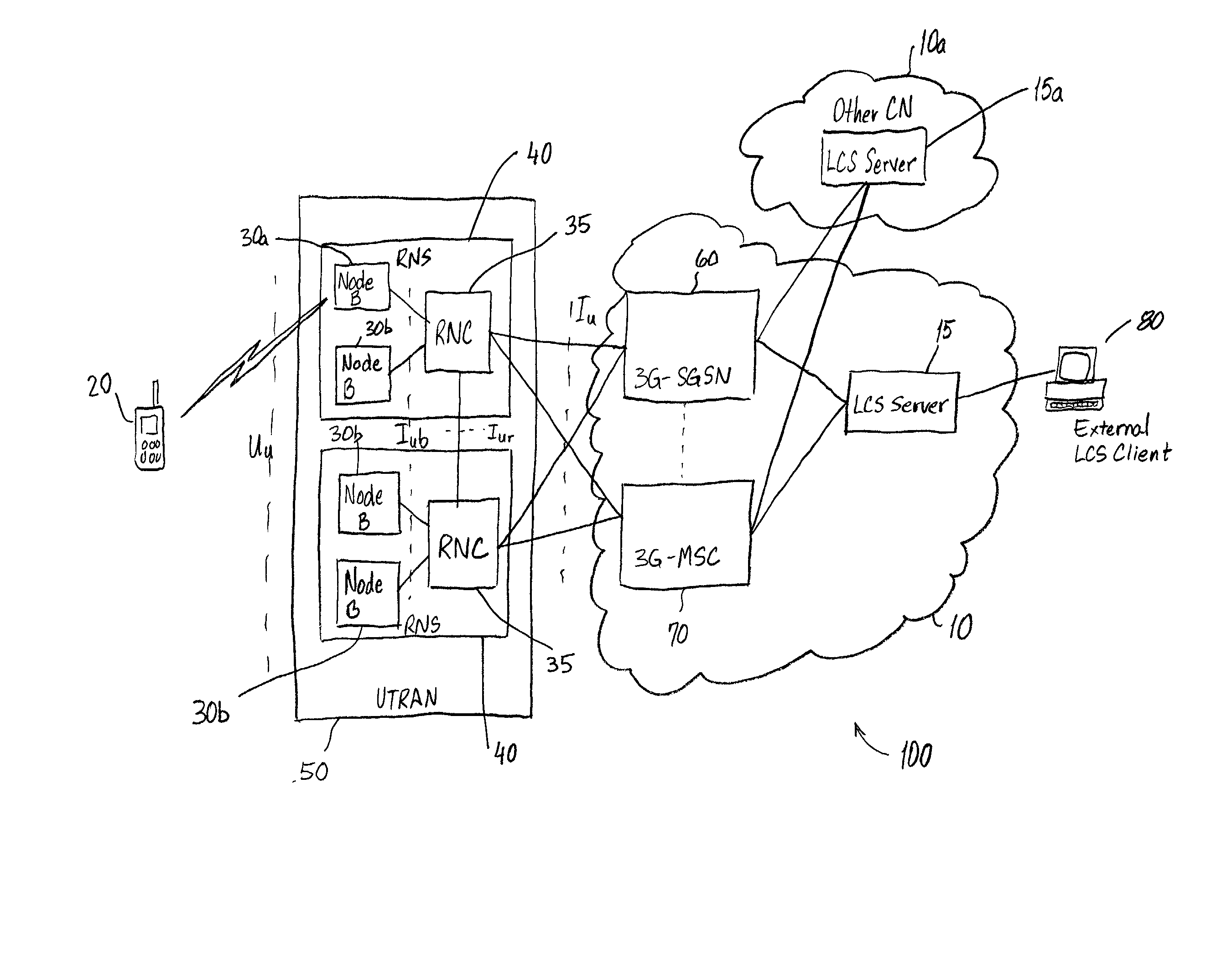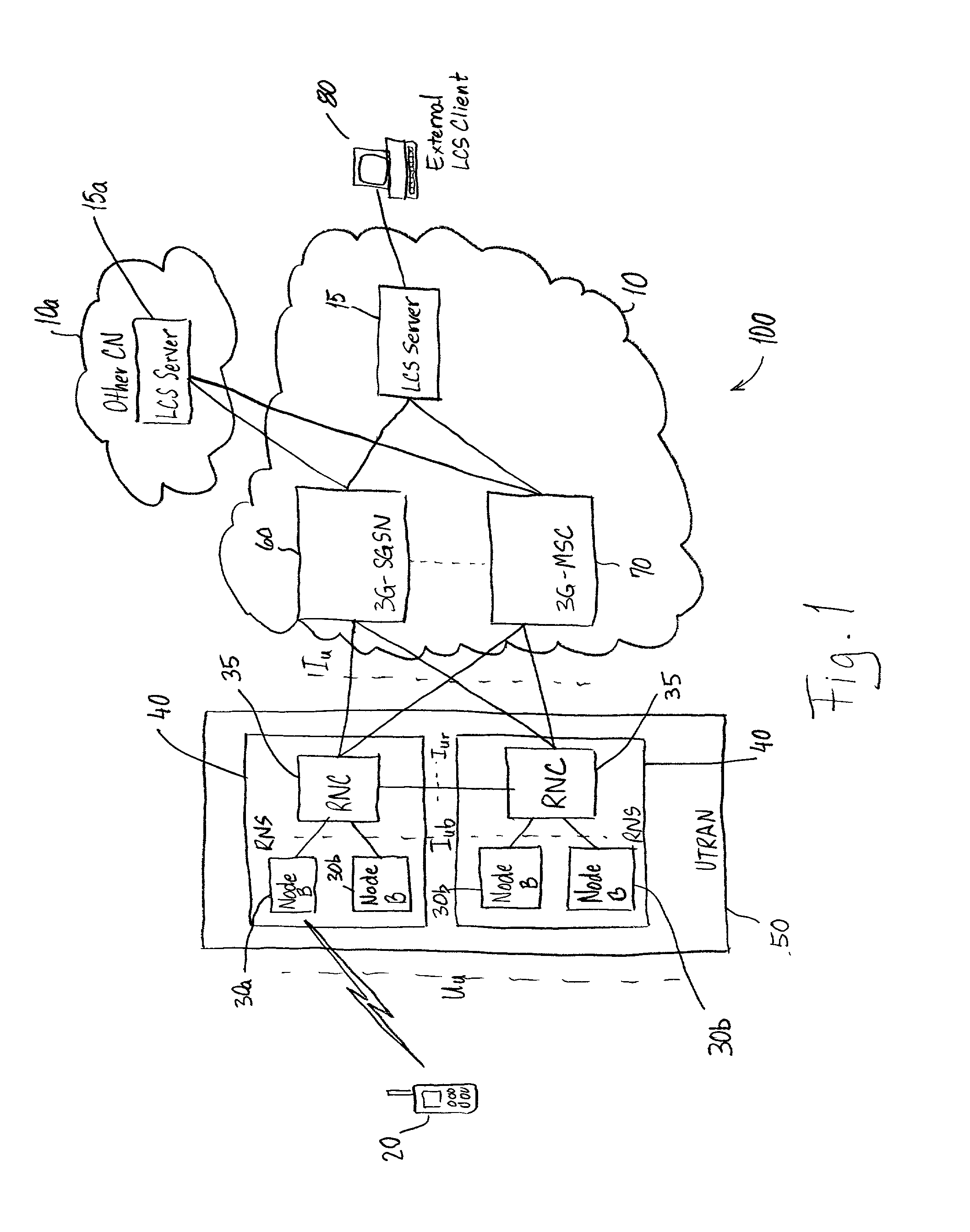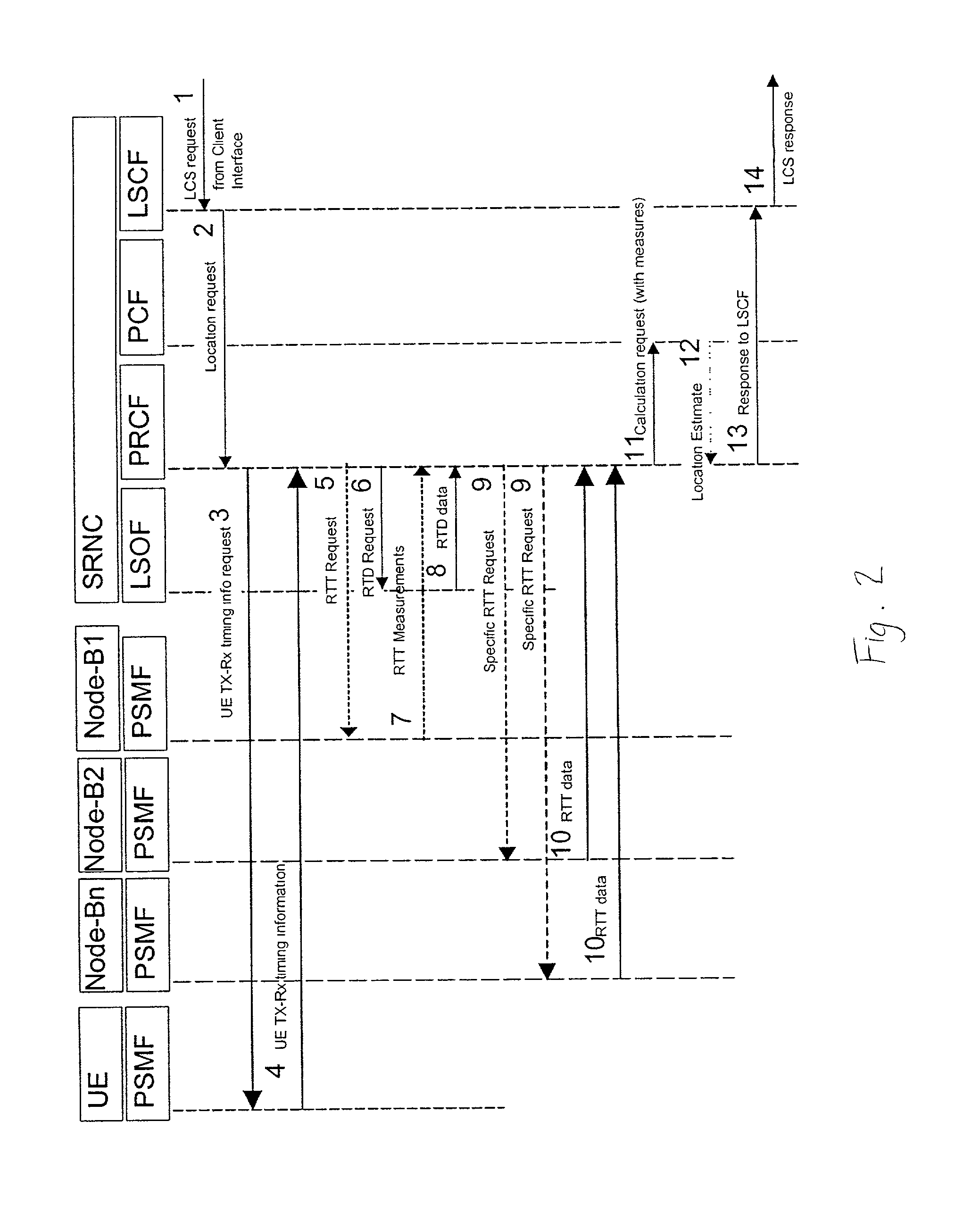Network-based method and system for determining a location of user equipment in CDMA networks
a network and user equipment technology, applied in direction finders using radio waves, navigation instruments, instruments, etc., can solve the problems of reducing the efficiency of the system, adding bulk and cost to the ue, and geographic location based on the rtt using the nominal transmission timing delay t.sub.0 can be significantly inaccura
- Summary
- Abstract
- Description
- Claims
- Application Information
AI Technical Summary
Problems solved by technology
Method used
Image
Examples
Embodiment Construction
[0029] A Third Generation (3G) mobile communication system 100 for performing the method according to the present invention is shown in FIG. 1. The 3G mobile communication system 100 comprises a Core Network (CN) 10 with a LoCation Service (LCS) server 15 for providing location information about a User Equipment (UE) 20 within the geographical area covered by the CN 10. The UE 20 is a mobile equipment with one or several Universal Mobile Telephone System (UMTS) Subscriber Identity Module(s). The UE 20 may comprise a mobile phone, person digital assistant (PDA), a wearable computer, a device based on WAP technology, or any other mobile device capable of wireless communication. A plurality of Radio Network Subsystems (RNSs) 40 are operatively connected with the CN 10. Each RNS 40 comprises a plurality of transceiver nodes 30a, 30b. Each transceiver node 30 comprises a node-B, which is a logical node for radio communication with the UE 20 in one or more cells within a geographical tran...
PUM
 Login to View More
Login to View More Abstract
Description
Claims
Application Information
 Login to View More
Login to View More - R&D
- Intellectual Property
- Life Sciences
- Materials
- Tech Scout
- Unparalleled Data Quality
- Higher Quality Content
- 60% Fewer Hallucinations
Browse by: Latest US Patents, China's latest patents, Technical Efficacy Thesaurus, Application Domain, Technology Topic, Popular Technical Reports.
© 2025 PatSnap. All rights reserved.Legal|Privacy policy|Modern Slavery Act Transparency Statement|Sitemap|About US| Contact US: help@patsnap.com



